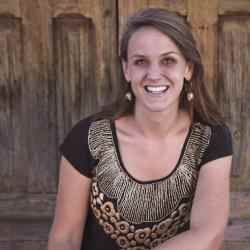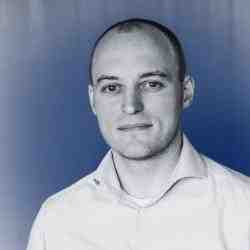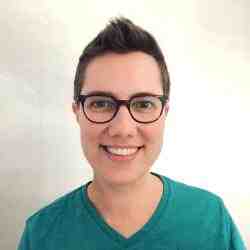Introduction
Investment in early childhood intervention – a system of professional services for very young children at risk of developmental delays, disabilities or atypical behavior – is a strategic question for each country, preventing abandonment and translating into positive returns on each dollar invested. However, in the European context, government service programs fail to provide integrated early childhood intervention strategies in all policies, leading to families lacking resources and skills to know how to develop their child during this period. Barbara Czeizel gives new hope for these families and for related expert groups by offering complex, institutionalized services to create better future prospects for children allowing them to become full and active members of their societies. Over the past 20 years, Barbara’s extraordinarily comprehensive approach enlarged the number of children receiving proper treatment across Europe via independent replication of her model center and mindset change.
The New Idea
In 1991, Barbara introduced the former communist Europe’s first opportunity for families of children aged birth to six years with autism, delayed or impaired development and premature babies at risk to access therapeutic and developmental services at one place. Her center quickly became an example for countries like Czech Republic or Slovakia to follow when building up their national early childhood intervention systems as it clearly showcased how one can make the theoretical foundations of the field work on a practical level. Barbara changed the paradigm of care by developing new types of relationships with hospitals, doctors, parents, experts, teachers and all kinds of supporters and convinced them how important it is to intervene as early as possible to let children thrive and progress when their brain development is the most active.
The first milestone in her work was to integrate early childhood intervention provision into the state welfare systems under the aegis of public education law in 1993. However, throughout the years, she realized it is no longer enough to wait for policy makers to set direction or allow professionals to have full autocratic control over the child’s development. She empowered a movement of parents to support and meet the needs of their children much more actively, thus pushing governments, professional communities and the entire society towards better reflecting and enabling the participation of its diverse citizenry in keeping with their rights. Moreover, Barbara also built a movement of caregivers to collaborate with each other in a transdisciplinary way without losing their special disciplinary contribution and considering the final outcomes for children and families who do need holistic support.
She established a model for a center catering to all therapeutic requirements of a single child under one roof, providing extremely professional, high quality services for families and building on interdisciplinary team work addressing every type of special need, delayed development and risk factor. Barbara strongly capitalized on the wide interest of others in replicating her work or taking the learnings of her work to their own work. Thus, she took strategic efforts to spread her idea through mobilizing other changemakers in Europe - especially in countries in transition - and seeding a host of local variants around the original model in Ukraine, Serbia and Romania.
The Problem
UNICEF report Children and Disability in Transition in CEE/CIS and Baltic States (2005) suggests that the status of children with disabilities is evolving. Even though this group has received relatively little global attention until quite recently, its intensity is an expressive indicator of the progress of any nation in the pursuit of an open, democratic and rights-based society. The overall share of children with special needs in any given population is about 10%; however, at least one million children are ‘missing’ from national disability registers. Under the communistic era, disability was a source of shame and denial. The state took on the role of caretaker; many children spent their lives in large institutions or special schools, distant from family and isolated from community. "Special education" in segregated facilities is still the overwhelming policy approach. Today, there has been significant progress in attitudes and, to a lesser degree, in action on integrating children with disabilities into mainstream schools. The 27 transition countries – like other high- and middle-development nations – still approach disability firstly as a medical issue and then as a social welfare demand.
Thinking in broader terms of Europe, several continental early childhood intervention (ECI) working groups concluded they face challenges when putting efforts to bring about stronger consistency of quality in ECI provision. Different cultures have different values and expectations. Diverse political systems have implications of differences in policy. Resources are not equally available to support ECI and the social commitment to young children, especially to vulnerable young children and their families. ECI is not represented in the European universities, hence there is lack of research and scientific output and the identity of experts is not enough strong. In many cases, interdisciplinary cooperation of professionals is not working properly. Lack of transparent communication and inefficient coordination between social, health, and educational sectors should be remedied. Besides models and temporary projects, every country needs a stable legal foundation of long term financing for interdisciplinary ECI services. Knowledge exchange is getting more and more substantial along with discussions of values and ethics in changing European societies. Additionally, enhancement of public relations is of a high importance to generate awareness for the need for ECI.
The Strategy
From 1986 onward, children with special needs were legally accepted to public nurseries. This practice did not have any established routine or infrastructure in Hungary so Barbara took the lead and started working for a nursery as a special teacher right after graduation. In order to create a well-established methodology, she approached her former professors to gather their advice and also built on the fieldwork experience of nannies. Three years later she applied for her first Soros grant and visited the UK, Germany and the US to collect best practices and consult with local experts on ECI. Returning to Hungary, she dreamt of launching an institution where families always come first and there is a clear focus on better outcomes for children. Eventually, in 1991, she co-founded Early Intervention Center Budapest and has been acting as a managing director for more than 20 years.
Barbara removed the barriers to full participation for young children with disabilities by successfully establishing and institutionalizing early childhood intervention in Hungary, which served as a model for post communist counties to build up their own ECI systems. She quickly became a principal person, a leading activist of the field in the region and later throughout the continent. She opened her second center in 2003. The two centers directly affected a steadily growing number of 6,000 children from all sections of society as part of their learning process and perfection how they should work. Her centers are set up to continue innovating with sixty excellent professionals, while Barbara goes out to spread the word.
Barbara’s ultimate goal has always been to improve the quality of life of families and to gradually enable parents to accept and love their kids as they are. She did so by equipping them with knowledge and tools to promote social inclusion in society and involving them in various parent and family engagement programs from the very first touch point. Children were seen in the context of family and broader community and got tailor-made support based on their level of activity and competencies.
The centers’ specialist group for autism developed model programs for the smoother integration of autistic kids to preschools and primary schools. These specialized daycare services were essential in bridging the gap between early education and school attendance for children with disabilities. By being a methodological platform for professionals, parents and teachers to collaborate, centers further developed the immature methodology of preschool provision for disabled kids. Barbara also created a model for integrative development schools with the first educational syllabus for special needs children, later taken up by local municipalities. In 2005, she reached legal inclusion of children with severe/multiple disabilities into public schools enacted in the Act on Public Education. This gave a real opportunity for disabled kids to interact day-to-day with “healthy” peers stimulating empathy and tolerance.
In 2009, Barbara introduced the Preventive Program targeted at premature babies, drawing attention to an often neglected target group and bringing together the related professional groups to work in a multidisciplinary approach instead of a solely medical one. Currently she works on to introduce a more systematic approach in collaboration with hospitals to ensure continuous early intervention services for children at risk throughout the country.
From the very beginning, Barbara used the power of lobbying and her professional involvement with colleagues in public institutions to push decision makers to provide stable legal background for the funding of ECI and improve the ability of social, educational and health systems to address the needs of disadvantaged children. Equally building on the influence of the media, she was especially working to raise awareness among parents of vulnerable children to fully integrate these kids into the service system and to ensure that the gap between those who are in need and those who are actually treated eventually closes.
Early on, Barbara assured financial independence for her centers. Developmental interventions used to be free of charge but became paid services when the economic depression hit the country. The small amount of contribution from parents helps to underwrite the centers’ operations, while local municipalities and the central budget both support cover further expenses. To cater to children from lower socioeconomic strata, Barbara set up sponsorship schemes whereby individuals and corporate partners can sponsor a child for a specified period.
Centers can be regarded as knowledge hubs for innovation in ECI conducting studies and developing new diagnostic models. Each year, around 100-150 professional visitors are hosted in the centers for benchmarking: to observe and learn the know-how, while also get trained. In cooperation with Eötvös Lóránd University, Barbara introduced the first post-secondary course for caregivers to specialize in ECI. Furthermore, she works on to start a new major dedicated to ECI building on her experiences as a development coordinator in designing the curriculum and standards of a European ECI masters course. Barbara finds it important to have a common philosophy and a set of standards across different professional disciplines in ECI, thus continues to take part in European projects and organize international conferences to bring about changes in the quality of services and provision for families. She is in cooperation with numerous national-international professional organizations and is regularly invited to deliver speeches in conferences abroad. Barbara uses all of these opportunities to showcase and spread the work and learnings of her centers gained over the years of practice, adjustment, refinement and invention. She is contributing to the advancement of the field with her expertise and innovative mentoring abilities, especially related to children with autism spectrum disorders.
In helping local teams independently setting up centers, she does not control or run them herself, rather provides structure, training and ongoing guidance. She helps the leaders find the right experts, train and establish the right kind of trainers and counselors at the centers, work with hospitals and the broader medical system to identify babies and children at an early stage, set up parent and family engagement programs, and work with the local governments. In expanding her reach to a broader European population, she helped with starting the very first Ukrainian Early Intervention Institute in Kharkov in a completely undeveloped market. In other cases, like with the Early Development and Rehabilitation Center Sanmartin Ciuc, Romania or with centers in Serbia, the market was already mature but did not achieve its goal, families remained unsatisfied, even underserved, thus there was a need for change in mindsets and approaches.
The Person
Barbara was born into a well-known family. Succumbing to the pressure from her parents, she prepared to become a professional athlete. Even though she did not like running at all, she truly wanted to live up to the expectations of the family and trained for the 400 meter hurdle race event in the Seoul Olympic Games. However, at the age of 17, she had to finish her sports career due to a severe knee injury.
Having seen her mother working with disabled children as a physician, Barbara decided to become a special education teacher and did her best to prepare for this huge change in her path. In college, she realized that the education system was quite outdated and criticized it for not putting emphasis on ECI before the age of six. As she did not find her studies motivating enough, she joined an alternative theatre, a community where she could open up to other people and to the whole world and through this, became inspired to become an active citizen.
Barbara’s empathic approach, customer focus and deeply ingrained belief in social inclusion inspires society on each level – children, parents, health & education professionals, social service workers, policy makers, opinion leaders, corporate citizens, civil organizations, the media and the disability movement. She has become obsessed by the notion that it is the needs of families that should drive the profession and not old-fashioned theories. Thanks to her genuine leadership skills parents, professionals and support workers have the feeling of individual worth and working in a goal-directed, humanistic team. Barbara is often called “The Jungle Fighter”, whose innate perseverance and strong lobbying resulted in changes in numerous laws and regulations. Her dedication is to human kind: “It is by nature that we are not perfect. We all have to learn how to accept each other. My personal vision is to give help and happiness to all families and children in need.”
Barbara is the mother of two.




